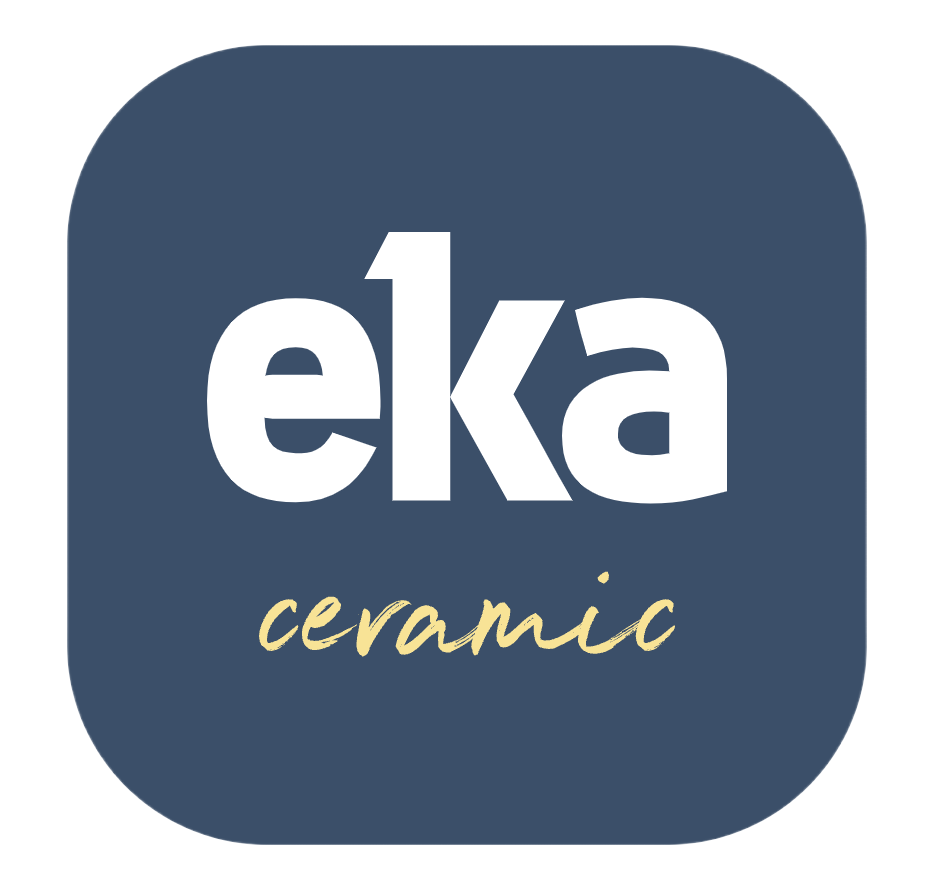Discover the Timeless Aesthetics and Cultural Narratives Behind Japan’s Most Iconic Ceramic Designs
Japanese ceramic tableware isn’t just functional—it’s a living art form rooted in centuries of aesthetic tradition and craftsmanship. From the philosophy of wabi-sabi to contemporary minimalism, the patterns found on Japanese ceramics reflect deep cultural stories and visual harmony.
This article dives into 10 of the most iconic patterns that define Japanese ceramic design. Whether you’re a homeware buyer, giftware merchant, or cross-border e-commerce seller, these motifs can guide your sourcing decisions and help shape trend-forward collections.
1. Seigaiha (青海波) – Blue Ocean Waves
Dating back to the 6th century, the Seigaiha pattern symbolizes eternal calm and stability. Often seen on sushi plates, ramen bowls, and white-and-blue porcelain, this motif is particularly popular among overseas Japanese restaurants and high-end tableware lines.
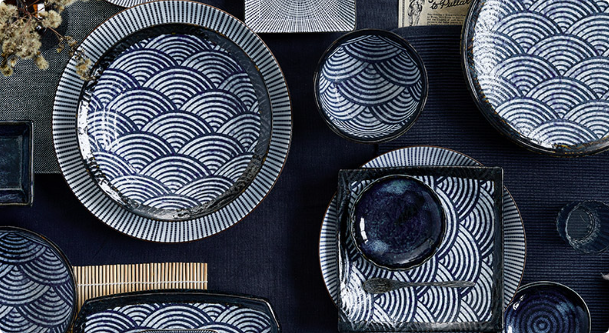
Sourcing Tip: Seigaiha sushi plates are frequently searched under the keyword “traditional Japanese sushi plate blue wave design” in Western markets.
2. Karakusa (唐草) – Arabesque Vines
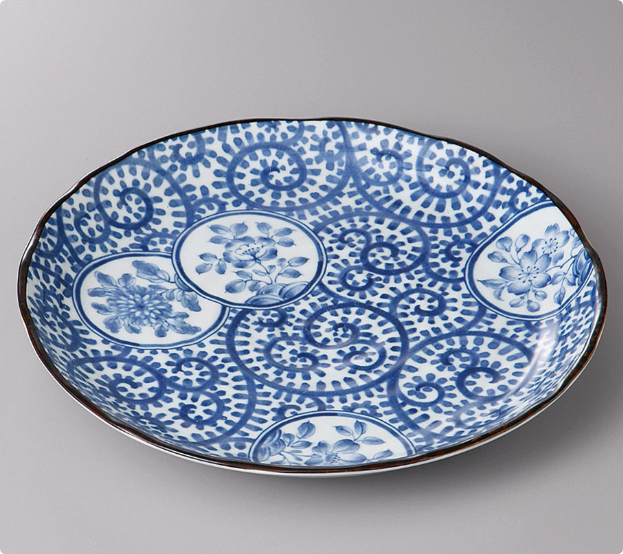
Inspired by winding vines, the Karakusa motif stands for longevity and prosperity. It’s commonly featured on soy dishes and teacups, especially in traditional gift sets and ceremonial tableware.
3. Asanoha (麻の葉) – Hemp Leaf Geometry
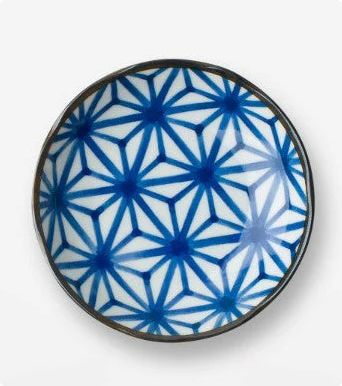
This crisp geometric pattern represents resilience and growth. It’s often used in miso soup bowls and wedding gift sets, making it an appealing motif for targeting families and newlyweds.
4. Shippō (七宝) – Interlocking Circles
Shippō, or “seven treasures,” is a series of overlapping circles symbolizing harmony and connection. It’s widely used on compartment plates and saucers, offering visual unity—ideal for buyers seeking a consistent design language across collections.
5. Kintsugi (金継ぎ) – Gold Repair Lines
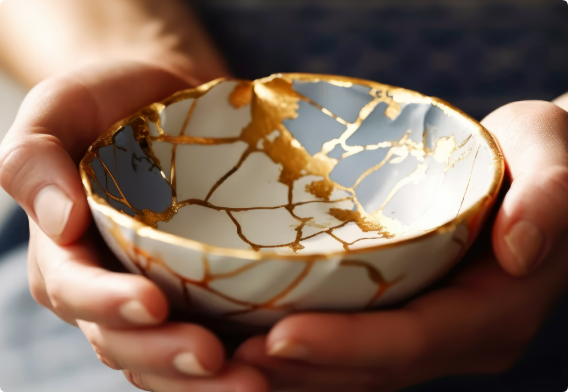
Although not a traditional pattern, Kintsugi has gained massive appeal in recent years. Its celebration of imperfection and restoration resonates globally. It’s commonly found on modern handcrafted mugs and platters.
6. Yūri-kinsai (有輪金彩) – Radiant Gold Detailing
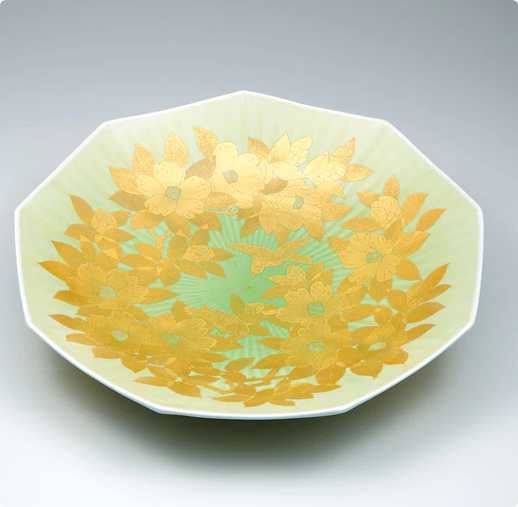
Often seen on luxury dinnerware, Yūri-kinsai adds an opulent gold touch to minimalist pieces. These are popular in premium tea sets and formal dinner plates, especially in Middle Eastern markets.
7. Mishima (三岛) – Inlaid Clay Motif
With roots in Korea, the Mishima style features fine white slip inlays. It’s popular in rustic tableware and vintage-inspired ceramic bowls, particularly for brands targeting nostalgic or countryside themes.
8. Brush Strokes (刷毛目) – Hand-Painted Zen
This hand-painted aesthetic captures raw brushwork, embodying artistic expression. Seen frequently on matcha bowls and artisan mugs, it suits buyers focused on the handcrafted, minimalist niche.
9. Sakura (桜) – Blossoms of Transience
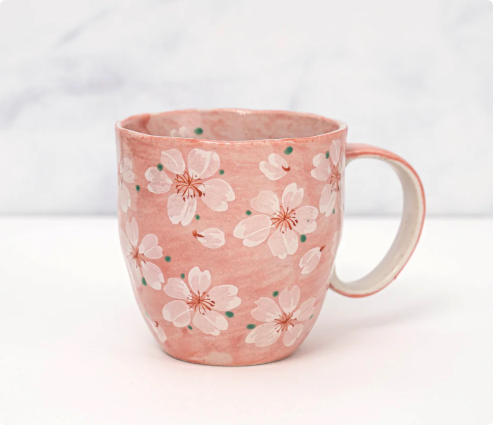
Cherry blossoms symbolize fleeting beauty and seasonal change. Perfect for teapots, dishes, and Mother’s Day gift sets, this floral motif is a favorite under the keyword “pink sakura ceramic teacup set.”
10. Tetsu-e (鉄絵) – Iron Glaze Drawings
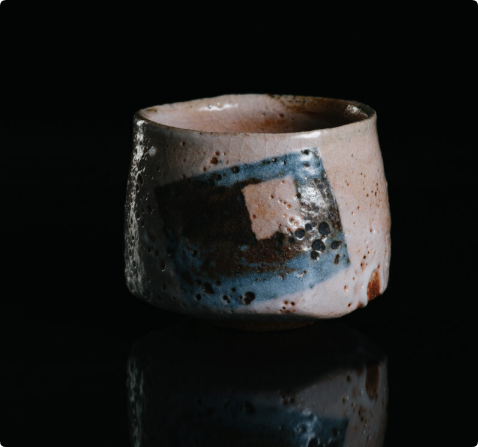
Tetsu-e uses iron glaze to paint earthy scenes like fish, birds, and landscapes. It’s a staple of wabi-sabi design and frequently seen in rice bowls and traditional plates aimed at nature-loving consumers.
🌸 Table: Japanese Ceramic Patterns Comparison
| Pattern Name | Visual Style | Common Product Types | Symbolism | Popular Export Regions |
|---|---|---|---|---|
| Seigaiha | Blue wave | Sushi plates, ramen bowls | Eternity, calm | US, UK, Australia |
| Karakusa | Vine motif | Soy dishes, teacups | Prosperity, longevity | Southeast Asia, Europe |
| Asanoha | Geometric hemp | Soup bowls, wedding sets | Growth, resilience | US, Germany |
| Shippō | Interlocked circles | Compartment plates, saucers | Harmony, connection | France, Japan (domestic) |
| Kintsugi | Gold cracks | Mugs, platters | Imperfection, healing | UAE, US, Europe |
| Yūri-kinsai | Gold accents | Dinner plates, tea sets | Opulence, radiance | Middle East, Russia |
| Mishima | Inlaid white clay | Small bowls, rustic pieces | Simplicity, nostalgia | UK, Canada |
| Brush Strokes | Hand-painted lines | Matcha bowls, artisan mugs | Mindfulness, expression | Global (premium niche) |
| Sakura | Floral blossoms | Teapots, dishes | Beauty, impermanence | Korea, Canada, France |
| Tetsu-e | Earthy drawings | Plates, rice bowls | Nature, tradition | Japan, US |
🇯🇵 5 Notable Japanese Ceramic Brands Worth Knowing
Here are five leading Japanese ceramic brands shaping the industry—great case studies for understanding product styling and market focus:
1. Noritake
Founded in 1904, Noritake is renowned for fine porcelain with gilded details. Its Colorwave line is especially popular among U.S. homeware retailers.
2. Arita Plus
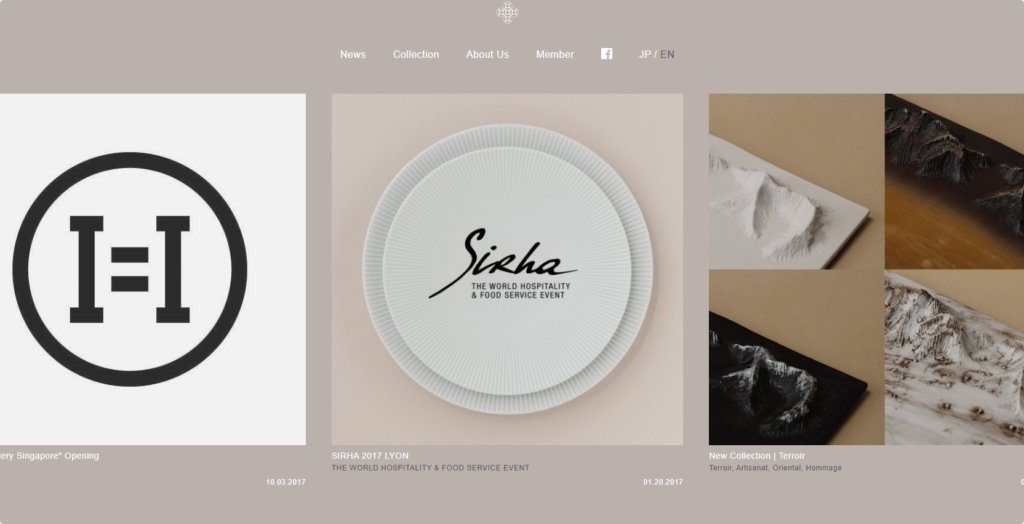
Rooted in Arita ware, this brand blends high-whiteness porcelain with hand-drawn blue motifs. Its minimalist collaborations attract design-forward buyers.
3. Nagasaki Hasami
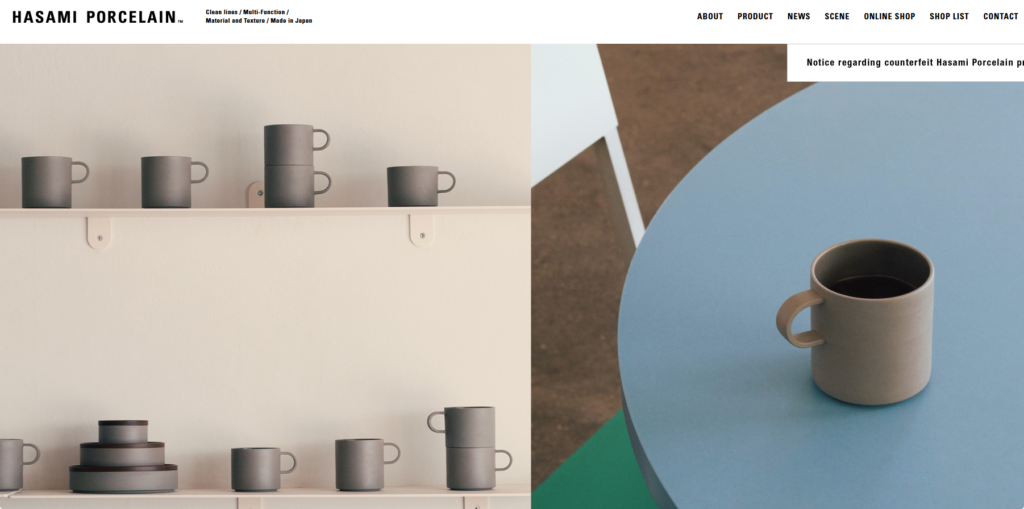
Known for combining geometric patterns with organic glazes, Hasami produces elegant daily-use items and timeless rustic sets.
4. Kihara Inc.
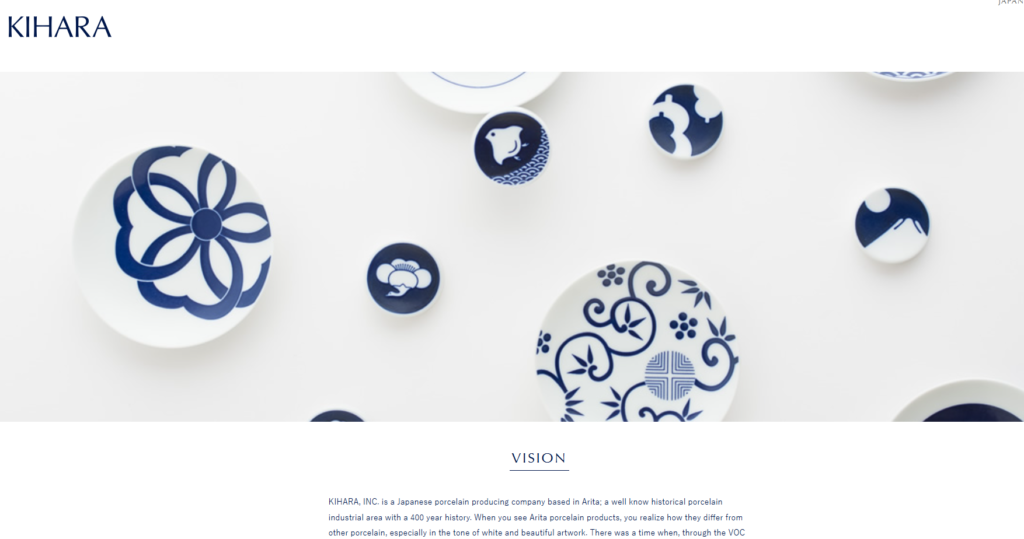
Specializing in modern interpretations of Arita ware, Kihara’s wabi-sabi tea sets have found a loyal following in premium gift markets worldwide.
5. Kousai Kiln
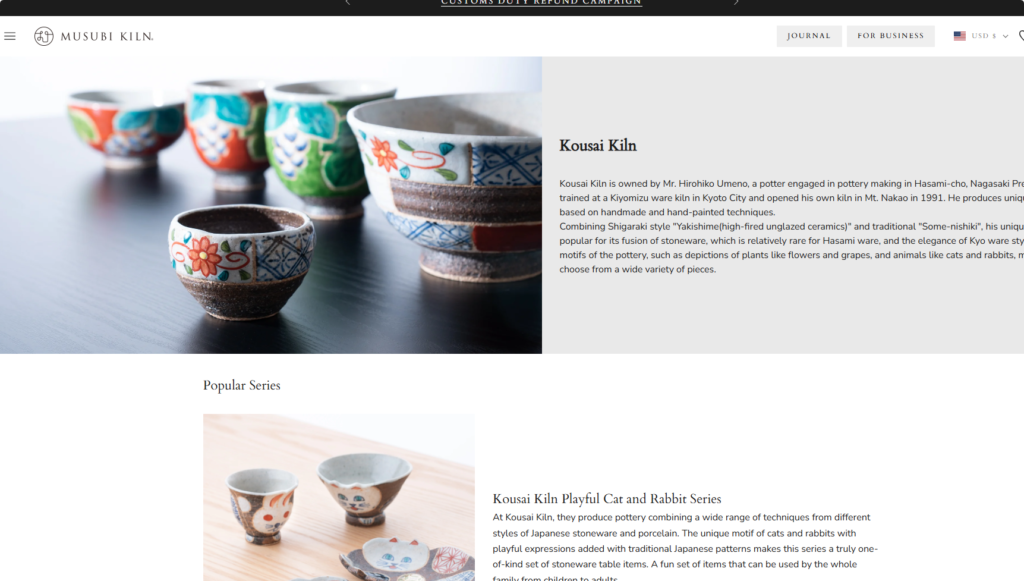
Recognized for its fusion of Kintsugi and iron-glaze artistry, Kousai markets its “healing pottery” concept with success across North America.
FAQ: People Also Ask
Q1: What is the most popular Japanese ceramic pattern internationally?
A: Seigaiha and Sakura motifs are among the most globally recognized due to their timeless aesthetics and deep cultural roots.
Q2: Are Japanese ceramic dishes microwave-safe?
A: Most modern Japanese ceramics are microwave-safe, except those with metallic detailing such as Kintsugi or Yūri-kinsai.
Q3: Where can I source Japanese-style ceramic tableware for my brand?
A: While original Japanese brands are iconic, many global brands work with Chinese ceramic factories that offer OEM & ODM services replicating authentic Japanese aesthetics.
Q4: Is hand-painted ceramic more expensive?
A: Yes. Pieces with brush-stroke designs or intricate inlays typically come at a premium due to their artisanal craftsmanship.
Q5: How can I verify the authenticity of a Japanese ceramic pattern?
A: Authenticity is often marked by region of origin, artist stamps, or collaboration certificates. Reliable OEM/ODM suppliers can also offer custom designs based on genuine Japanese motifs.
Conclusion: Why Global Buyers Are Embracing Japanese Ceramic Patterns
From creating limited seasonal sets to launching minimalist, high-end dinnerware collections, Japanese patterns offer universal appeal. Their deep symbolism and visual elegance make them highly shareable on social platforms like Instagram and Pinterest.
If you’re sourcing Japanese-style ceramic ramen bowls, sushi plates, or artisanal tea sets, partnering with a capable manufacturer ensures consistent quality and customization.
EKA is a ceramic tableware factory based in China, providing OEM and ODM services for global kitchenware and home brands. With years of export experience, EKA helps clients turn aesthetic ideas into scalable production—from design development to final shipment.
Let the beauty of Japanese ceramic artistry shape your next best-selling collection.
